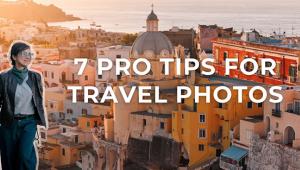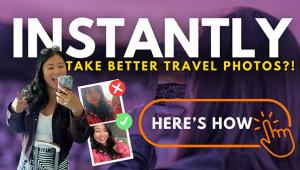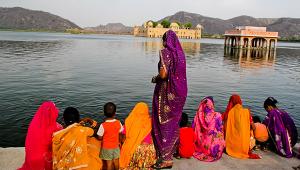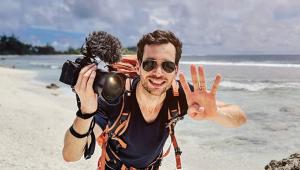Photographing in Crowds: How I Handle the Selfie Stick Invasion
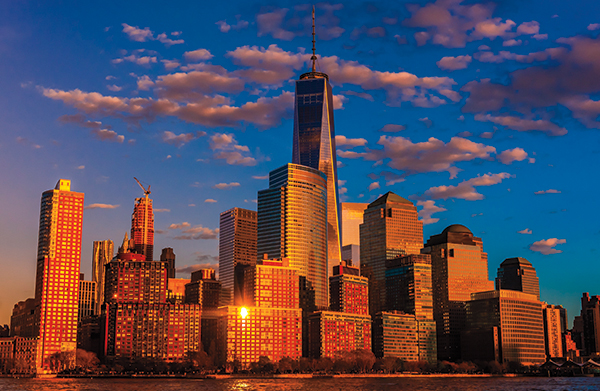
All Photos © Blaine Harrington
It wasn’t long ago that I began to notice I had competition—and I’m not talking about other travel photographers.
Maybe you’ve noticed it, too. These days it seems that everybody’s a photographer shooting with smartphones and selfie sticks, and more and more they’re crowding me out of the vantage points that are the source of my images.
I’ve run into this in China at the Great Wall, in Japan, in Tibet, in Denver at Union Station: folks five deep, with smartphones, taking pictures, often of themselves.
The right time I can manage; the right place is becoming a problem. Of course they have a right to these places, these vantage points, same as I do, and that means I’m scrambling to find an answer.
The invasion of the selfie sticks was most evident to me on a recent trip to New York City. I know what you’re thinking: What did you expect, deserted streets? Well, whatever I might have expected, what I got was New York City in the spring, complete with tourists, residents, day-trippers, and millions of picture-taking smartphones. It was a challenge amplified and magnified because everything is amplified and magnified in New York City.
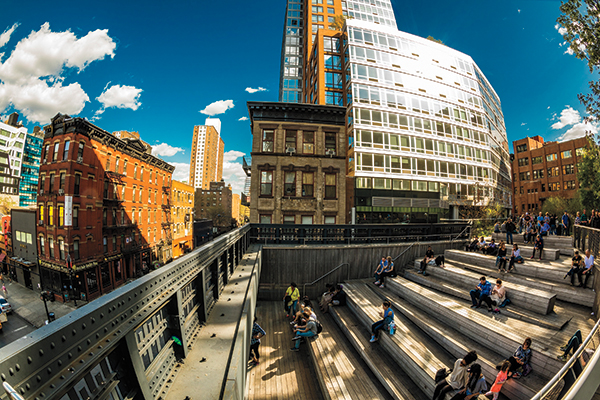

As I photographed my way along, I compiled a mental list of solutions, partial solutions, and improvisations to deal with limited shooting space and decreasing access to the best angles of view.
I realized right away I could pretty much forget using a tripod. Many places just don’t allow it; in other places the crowds make it impractical if not downright dangerous. When you’re fighting for a place to stand, a tripod makes no sense at all.
Okay, then: faster shutter speeds aided by boosting ISO.
And I took comfort in a positive result: no tripod means I’m not anchored to one spot. I’m free to roam…as long as the crowd permits.
Photographing familiar landmarks became more of a problem than ever before because folks with cameras in their phones wanted to be in the picture with the landmark, either via selfies or friends with cameras. Sometimes I had no choice but to alter the idea of the picture I wanted to make, or the picture I so fondly visualized. But I stayed positive by considering that alteration a challenge to my creativity.


Lens choice helped. Going wide angle, even fisheye, will sometimes diminish people in the scene; going telephoto can eliminate distractions. Another positive thought: some people you don’t mind being in the picture; they look good and add to the image. For others, I played a waiting game, hoping they’d move on. And if I had the time, I moved on, and came back later.
Which brings up a key element: time. People with cameras don’t show up in the early morning hours—but I do. Sometimes a sunrise picture is as good as a sunset shot. And while sunsets will bring out the smartphone crowd, many times they’re shooting the sun sinking behind the buildings, below the horizon, or into the ocean; me, I’m facing the other direction, shooting what the sun is illuminating.
Weather can help. Rain, fog, or snow often results in dramatic, moody photographs, and chances are not a lot of folks will be out and about with cameras in those conditions. The problem is, my most successful images are generally blue-sky kinds of pictures; “moody” and “atmospheric” are adjectives best limited to a few frames.

Sometimes experience comes to the rescue, as I find the more I know about a location, especially a city, the more likely I’ll know the less obvious vantage points.
I’ve accepted that the world’s changed, and everybody’s a photographer with the same viewpoint rights. I can’t beat ’em. I can’t join ’em. I just have to keep trying to outthink and outmaneuver ’em.

Preferred Glass
I carry several lenses, but the wide angle I can’t be without is my 14-24mm f/2.8G ED AF-S Nikkor. Made for the full-frame sensors of Nikon FX DSLRs (I currently shoot D700 and D810), it’s serious glass, an incredibly sharp, fast lens with exceptional color rendition. It is not, however, small or light; it’s a professional lens. In the realm of attention-getting wide-angle views, I like the 16mm f/2.8D AF Fisheye-Nikkor held “flat” to the scene to maintain a hint of reality, tilted to produce varying degrees of dramatic weirdness.
A selection of Blaine Harrington’s images from wide-open spaces and crowded confines can be viewed at his website, www.blaineharrington.com.
